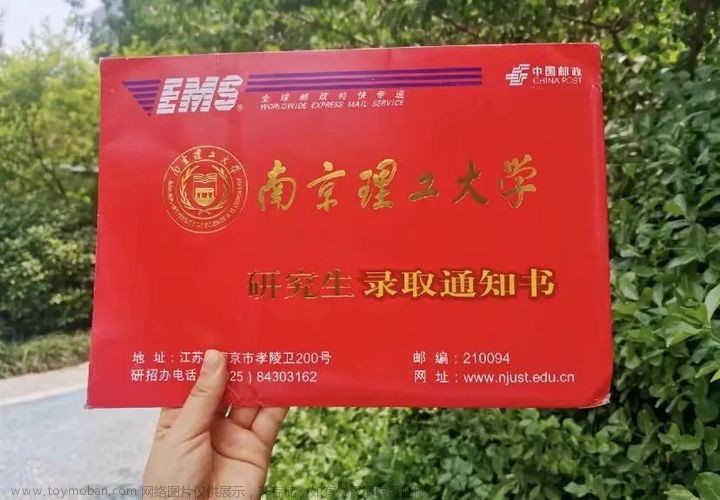实验二
1. 2-4译码器
top.v
module decode24(x,en,y);
input [1:0] x;
input en;
output reg [3:0]y;
always @(x or en)
if (en)
begin
case (x)
2'd0 : y = 4'b0001;
2'd1 : y = 4'b0010;
2'd2 : y = 4'b0100;
2'd3 : y = 4'b1000;
endcase
end
else y = 4'b0000;
endmodule
sim_main.cpp
int main() {
sim_init();
top->en = 0b0; top->x = 0b00; step_and_dump_wave();
top->x = 0b01; step_and_dump_wave();
top->x = 0b10; step_and_dump_wave();
top->x = 0b11; step_and_dump_wave();
top->en = 0b1; top->x = 0b00; step_and_dump_wave();
top->x = 0b01; step_and_dump_wave();
top->x = 0b10; step_and_dump_wave();
top->x = 0b11; step_and_dump_wave();
sim_exit();
}
仿真结果
2. 4-2编码器
top.v
module encode42(x,en,y);
input [3:0] x;
input en;
output reg [1:0]y;
always @(x or en) begin
if (en) begin
case (x)
4'b0001 : y = 2'b00;
4'b0010 : y = 2'b01;
4'b0100 : y = 2'b10;
4'b1000 : y = 2'b11;
default: y = 2'b00;
endcase
end
else y = 2'b00;
end
endmodule
sim_main.cpp
int main() {
sim_init();
top->en=0b0; top->x =0b0000; step_and_dump_wave();
top->x =0b0001; step_and_dump_wave();
top->x =0b0010; step_and_dump_wave();
top->x =0b0100; step_and_dump_wave();
top->x =0b1000; step_and_dump_wave();
top->en=0b1; top->x =0b0000; step_and_dump_wave();
top->x =0b0001; step_and_dump_wave();
top->x =0b0010; step_and_dump_wave();
top->x =0b0100; step_and_dump_wave();
top->x =0b1000; step_and_dump_wave();
sim_exit();
}
仿真结果
3. 优先编码器
3. 优先编码器
top.v
module encode42(x,en,y);
input [3:0] x;
input en;
output reg [1:0]y;
integer i;
always @(x or en) begin
if (en) begin
y = 0;
for( i = 0; i <= 3; i = i+1)
if(x[i] == 1) y = i[1:0];
end
else y = 0;
end
endmodule
sim_main.cpp
int main(){
sim_init();
int i;
top->en = 0;
top->x = 0b0000;
for(i=0;i<=15;i++){
step_and_dump_wave();
top->x = top->x+1;
}
step_and_dump_wave();
top->en = 1;
top->x = 0;
for(i=0;i<=15;i++){
step_and_dump_wave();
top->x = top->x+1;
}
sim_exit();
}

4. 8-3优先编码器

top.v
module top (x,y,en,lb,seg0);
input [7:0] x;
input en;
output reg lb;
output reg [6:0] seg0;
output reg [2:0] y;
always@(*)
begin
if(en)
begin
lb = 1;
casez(x) //此处用casex会warning,因为casex不可综合
8'b0000_0000: begin y = 3'b000;lb = 0; end
8'b0000_0001: y = 3'b000;
8'b0000_001?: y = 3'b001;
8'b0000_01??: y = 3'b010;
8'b0000_1???: y = 3'b011;
8'b0001_????: y = 3'b100;
8'b001?_????: y = 3'b101;
8'b01??_????: y = 3'b110;
8'b1???_????: y = 3'b111;
default: y = 3'b000;
endcase
end
else y = 0;
end
bcd7seg sg0({1'b0,y},seg0);
endmodule
bcd7seg.v
module bcd7seg(
input [3:0] b,
output reg [6:0] h
);
always@(*)
begin
case(b)
4'b0000: h=7'b0000_001;
4'b0001: h=7'b1001_111;
4'b0010: h=7'b0010_010;
4'b0011: h=7'b0000_110;
4'b0100: h=7'b0110_011;
4'b0101: h=7'b0100_100;
4'b0110: h=7'b0100_000;
4'b0111: h=7'b0001_111;
4'b1000: h=7'b0000_000;
4'b1001: h=7'b0000_100;
4'b1010: h=7'b0001_000;
4'b1011: h=7'b1100_000;
4'b1100: h=7'b0110_001;
4'b1101: h=7'b1000_010;
4'b1110: h=7'b0110_000;
4'b1111: h=7'b0111_000;
endcase
end
endmodule
sim_main.cpp
#include <verilated.h>
#include "Vtop.h"
#include <nvboard.h>
static TOP_NAME dut;
void nvboard_bind_all_pins(Vtop* top);
void single_cycle(){
dut.eval();
}
int main(){
nvboard_bind_all_pins(&dut);
nvboard_init();
while(1){
single_cycle();
nvboard_update();
}
}
nvboard约束文件 top.nxdc
top = top
y(LD2,LD1,LD0)
x(SW7,SW6,SW5,SW4,SW3,SW2,SW1,SW0)
en(SW8)
seg0(SEG0A,SEG0B,SEG0C,SEG0D,SEG0E,SEG0F,SEG0G)
lb(LD4)
Makefile文件
TOPNAME = top
NXDC_FILES = constr/top.nxdc #约束文件路径
INC_PATH ?= #?=的意义是,INC_PATH如果被未被定义,则为?=后的值,如果被定义过,则保持原来的值
VERILATOR = verilator
VERILATOR_CFLAGS += -MMD --build --cc -O3 \
--x-assgin fast --x-initial fast --noassert --trace
BUILD_DIR = ./build
OBJ_DIR = $(BUILD_DIR)/obj_dir
#OBJ_DIR = ./build/obj_dir
BIN = $(BUILD_DIR)/$(TOPNAME)
#BIN = ./build/top
default: $(BIN) #终极目标为default,依赖./build/top
$(shell mkdir -p $(BUILD_DIR)) #建立./build目录
SRC_AUTO_BIND = $(abspath $(BUILD_DIR)/auto_bind.cpp) #abspath:返回文件的绝对路径
#SRC_AUTO_BIND = ~/vtest/ex2/part4/build/auto_bind.cpp 此为约束文件
$(SRC_AUTO_BIND): $(NXDC_FILES) # 目标文件(约束文件SRC_AUTO_BIND)的建立依赖于constr/top.nxdc
python3 $(NVBOARD_HOME)/scripts/auto_pin_bind.py $^ $@
# python3 $(NVBOARD_HOME)/scripts/auto_pin_bind.py constr/top.nxdc auto_bin.cpp
#此命令用来生成auto_bin.cpp文件
VSRCS = $(shell find $(abspath ./vsrc) -name "*.v")
#在~/vtest/ex2/part4/vsrc目录中寻找所有的.v文件
#VSRCS = top.v bcd7seg.v
CSRCS = $(shell find $(abspath ./csrc) -name "*.c" -or -name "*.cc" -or -name "*.cpp")
#CSRCS = sim_main.cpp
CSRCS += $(SRC_AUTO_BIND)
#CSRCS = sim_main.cpp auto_bind.cpp
include $(NVBOARD_HOME)/scripts/nvboard.mk
#在该Makefile中引用其他Makefile
INCFLAGS = $(addprefix -I, $(INC_PATH))
#INCFLAGS = -I
CFLAGS += $(INCFLAGS) -DTOP_NAME="\"V$(TOPNAME)\""
#CFLAGS = -I -DTOP_NAME="\"Vtop\""
LDFLAGS += -lSDL2 -lSDL2_image
$(BIN): $(VSRCS) $(CSRCS) $(NVBOARD_ARCHIVE)
#./build/top文件的建立依赖于 top.v bcd7seg.v sim_main.cpp auto_bind.cpp 以及verilator仿真可执行文件
@rm -rf $(OBJ_DIR)
$(VERILATOR) $(VERILATOR_CFLAGS)\
--top-module $(TOPNAME) $^\
$(addprefix -CFLAGS , $(CFLAGS)) $(addprefix -LDFLAGS , $(LDFLAGS)) \
--Mdir $(OBJ_DIR) --exe -o $(abspath $(BIN))
# verilator -MMD --build --cc -O3 --x-assgin fast --x-initial fast --noassert --trace \
#--top-module top top.v bcd7seg.v sim_main.cpp auto_bind.cpp \
#-CFLAGS -I -DTOP_NAME="\"VTOP\"" -LDFLAGS -lSDL2 -lSDL2_image \
#--Mdir ./build/obj_dir --exe -o ./build/top
#--top-module top 指定顶层文件名 --Mdir 将生成的文件都放入obj_dir目录中 --exe -o ./build/top 产生可执行文件并指定名字为./build/top
all: default
run:$(BIN)
@$^
#make run 执行可执行文件 ./build/top
clean:
rm -rf $(BUILD_DIR)
.PHONY: default all clean run
结果展示文章来源:https://www.toymoban.com/news/detail-557055.html


 文章来源地址https://www.toymoban.com/news/detail-557055.html
文章来源地址https://www.toymoban.com/news/detail-557055.html
到了这里,关于南京大学数字电路与计算机组成实验的Verilator仿真(二)的文章就介绍完了。如果您还想了解更多内容,请在右上角搜索TOY模板网以前的文章或继续浏览下面的相关文章,希望大家以后多多支持TOY模板网!











